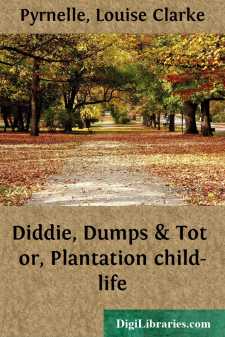Categories
- Antiques & Collectibles 13
- Architecture 36
- Art 47
- Bibles 22
- Biography & Autobiography 811
- Body, Mind & Spirit 110
- Business & Economics 26
- Computers 4
- Cooking 94
- Crafts & Hobbies 3
- Drama 346
- Education 45
- Family & Relationships 50
- Fiction 11812
- Games 19
- Gardening 17
- Health & Fitness 34
- History 1377
- House & Home 1
- Humor 147
- Juvenile Fiction 1873
- Juvenile Nonfiction 202
- Language Arts & Disciplines 88
- Law 16
- Literary Collections 686
- Literary Criticism 179
- Mathematics 13
- Medical 41
- Music 39
- Nature 179
- Non-Classifiable 1768
- Performing Arts 7
- Periodicals 1453
- Philosophy 62
- Photography 2
- Poetry 896
- Political Science 203
- Psychology 42
- Reference 154
- Religion 488
- Science 126
- Self-Help 61
- Social Science 80
- Sports & Recreation 34
- Study Aids 3
- Technology & Engineering 59
- Transportation 23
- Travel 463
- True Crime 29
Louise Clarke Pyrnelle
Louise Clarke Pyrnelle (1850–1907) was an American author known for her works that depicted life in the American South. She is best remembered for her novel "Diddy Dumps, or, The Tenderloin Reform Club," published in 1889, which provides a satirical look at urban life. Pyrnelle's work often explored themes of Southern identity, race, and class, reflecting the complexities of her era. In addition to her writing, Pyrnelle also worked as a schoolteacher in Alabama, where she drew inspiration for many of her stories.
Author's Books:
Sort by:
THE FOURTH OF JULY "THE glorious Fourth" was always a holiday on every Southern plantation, and, of course, Major Waldron's was no exception to the rule. His negroes not only had holiday, but a barbecue, and it was a day of general mirth and festivity. On this particular "Fourth" the barbecue was to be on the banks of the creek formed by the back-waters of the river, and was to be...
more...
CHAPTER I. DIDDIE, DUMPS, AND TOT. They were three little sisters, daughters of a Southern planter, and they lived in a big white house on a cotton plantation in Mississippi. The house stood in a grove of cedars and live-oaks, and on one side was a flower-garden, with two summer-houses covered with climbing roses and honeysuckles, where the little girls would often have tea-parties in the pleasant...
more...



